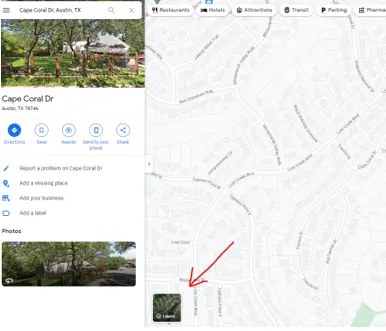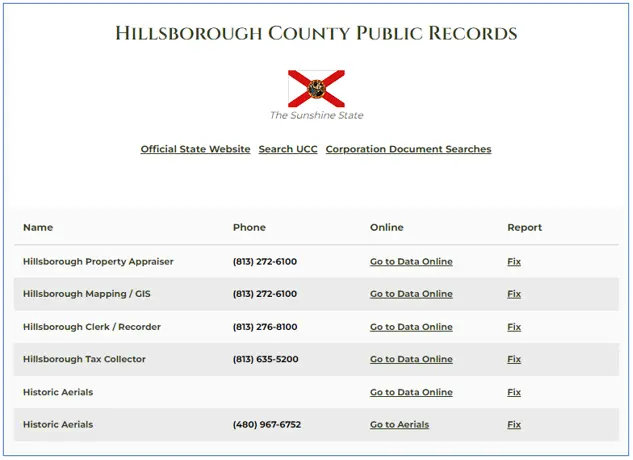Published:
02/22/2022 05:04pm
How to Research the History of a House
How to Research the History of a House
Nowadays most people like to be informed. Buying a house is a nerve-wracking time, and you want to make sure you know everything about your future home as possible. At the end of the day, this is why you find need that Top Notch Home Inspector (and why you’re here at Red Flag Home Inspection). So, you have your sights on a house and you are taking a deeper dive into the history of the house. Here are some resources that can help you along in that journey.
1. Multiple Listing Service (MLS) or Ask Your Realtor
The MLS is a backend database that real estate agents use to create (and share with prospective buyers) the house(s) you are interested in purchasing. If you are curious, you can learn more about the MLS
HERE. This database, unfortunately, is not available to the public but your chosen Real Estate professional certainly can gain access to get you the prior listing records. There you can review the square footage, the wallpaper, the carpet in the bathroom, etc. You may actually get a glimpse into what the house looked like before they knocked out some walls and opened it up. Some have had success finding former listing data from
Estately,
Compass, or
Moveto as well.
2. Evacuation Zone and/or Flood Zone
In Florida, knowing which evacuation zone a house is located in is a must. Florida Disaster has an interactive map where you can put in your address and zoom in/out to see the zone you are in (
HERE). Knowing which zone you are in, as well as your designated evacuation route should be researched and posted somewhere in your home.
Flooding causes more damage in the United States than any other severe weather-related event. To check your new home’s susceptibility to flooding, you can check FEMA’s interactive map
HERE. Those located within a designated Flood Zone will be required to secure Flood insurance if they carry a mortgage on the home. Even if not located within a designated flood zone, you may want to consider getting this insurance coverage. A handy tool I found when preparing for this article can be found
HERE. This site will assess your “Flood Factor” and report on the likelihood of you encountering a flood within various timespans you designate. It will also tell you the likelihood of your neighborhood, zip code, city, or county having a flood event.
3. Foreclosures and Distressed Property Search
Foreclosure sales can bring down the average sales price in a given area, and the presence of bank-owned or foreclosed properties could develop into a neighborhood eyesore. You can try to get ahead of this by researching distressed and foreclosure properties at
Realtytrac. The site is just as easy as using
Zillow or google. You just type in the city or street and see what listings pop up. You have the ability to filter by pre-foreclosure, auction, bank owned, as well as a conventional sale. You can, of course, also get these listings from the MLS through your chosen realtor. You don’t always get 2’ tall grass to point out the distressed properties, so this site will help you look into any that may exist near your new home.
4. Comprehensive Loss Underwriting Exchange (C.L.U.E.)
This is a
LexisNexis database that contains up to seven years’ worth of automobile and personal property claims data. It also contains scoring data to assist insurance companies with a risk assessment to help lead pricing and underwriting. This data, however, can only be accessed by the owner of the property, the insurer, or the lender for a property. You can, however, request that the current owner (the seller) order a C.L.U.E. report on your behalf. This may alert them to issues they had no idea existed prior to their own purchase. This information can prove useful to assist you in assessing what perils the building has gone through, as it is not always easy to determine events that occurred after the damaged materials are removed and made new.
If you are wondering why you would care if the damaged materials were removed/replaced, you may not know how often unskilled labor and/or DIY enthusiasts tackle some of these issues themselves. Things have the potential to look great, but not be so great when you peel back the layers. People following proper protocols and standards of care, unfortunately, is one of those things you need to be on the lookout for. Doing the right thing is sometimes much more expensive than doing, enough.
5. Talk to the Neighbors
You can learn A LOT about a neighborhood by latching onto the local gossip hub. Three short hours later and you will know all of the cul-de-sac drama, who painted the house with un-approved color palettes, and who’s dog calls your yard their personal dumping grounds. You can also learn quite a bit about the buildings. Basic up-keep and maintenance questions are fair game. Knowing if a laundry list of defects was found shortly after construction could prove pretty useful for your decision-making processes. You may also want to inquire about the schools, traffic patterns, and any local amenities that are nearby. So be bold and introduce yourself. If it’s a crash and burn, you will need to assess whether you can live next to Ms. “I keep my yard pristine with my dog’s dumping on yours”. True story, dog urine burns lawns. Look it up!
Seriously though, neighbors are a great source of information. People know other people, who may know about the house or area you are looking to move into.
6. Search Engine
You googled your cold symptoms and convinced yourself that you were dying, so why not try it for your future house? Well, you actually can grab some pretty low-hanging fruit with a simple google search. Oftentimes, listings from
Trulia,
Redfin,
Realtor.com, etc. pop up. These listings may have a different or more in-depth set of photos that will help jump-start your search. You may pick up the criminal history of the past owner, or a voter registration site that tells you he voted for that terrible guy that one time.
While you are there, try out
Google Streetview. To use it, you type in the address into
google. Then click on the map image (the first response), then drag the little orangish-yellow guy at the lower right corner into the screen where you want to view. You will see the available Streetview footage with a differing coloration as you are dragging this guy around. From there, you can move up/down the street, or zoom in or out. You can also click on the clock icon at the upper left corner to see the same image in that same location on prior dates. This is great to see if the roofing changed, or if they painted the house. Just be warned, you may see 6 cars parked in the front yard and 2’ tall grass. If you are in looking in densely populated areas, a good amount of imaging should be available dating back to 2007. More sparse areas may have gotten little or no Streetview imagery.
7. Aerial Imagery
Modern-day aerial imagery has been showing increased clarity and frequency of collection. What this means, is that there is a fighting chance that you can see (within a few years’ span) when that building addition was constructed. Any “visual” event that you can see from an overhead perspective may be observable in some of the more modern and clear imagery. So if a detached building was built, or a pool was put in, you would likely be able to narrow down when it was done. You can also typically see coloration changes that are typical when replacing roof coverings, or when they gave up on their yard and started embracing the weeds. In Florida, most municipalities have limited aerials on their property assessment pages. To see your county, you can go
HERE for Hillsborough,
HERE for Pinellas, or
HERE for Hernando counties. If you are not in these three counties, usually you can easily find your local Property Appraiser’s office by googling the county + “property appraiser”.
Another great place to get current aerial images is on google. Similar to the way you navigated to Streetview above, instead of dragging the orange/yellow guy, you just click on the map link itself. Once in, you can click the icon at the lower left corner to toggle from “map” mode to “aerial” mode.

Once there, you can zoom in pretty close and see some decent detail. The date of the imagery is posted at the lower right corner of the map. If you right click, you can select points and measure distances (say if you wanted to estimate if your new pool will be too small for that 6’ pool float you’ve been looking at. You can also copy the latitude and longitude in case you need coordinates for any other purpose.

Another great resource, of course from google, is
Google Earth. You type the address, street or city you are interested in at the hourglass icon on the left side of the screen. From there, you can scan around, pan, tile, and zoom in and out.



You can also drag that orange/yellow guy into place to see the Streetview image. If interested, you can also draw and annotate the maps you are viewing. In Google Earth Pro, the desktop version of this program, you can click on the “Historical Imagery” button to see the same house spanning several aerials (usually provided in 2 to 6 year spans). If you don’t know why this roof is not an efficient roof design, please check out my article on the topic
HERE. On the one prior, I don’t think I have to tell you that a big tarp on the roof is BAD. For those who don’t know, those are placed as temporary coverings if/when there are roofing issues. I would definitely ask questions about why it was there (if you do not see it during your inspections) and request paid invoice receipts to prove it was dealt with properly.
8. Public Records Searching
If you are really committed to learning the history of a potential home, your journey will next take you to Public Record Searching. A directory that may help you find the Public Record authorities in your area can be found
HERE. Below is the export when I put in FLORIDA, HILLSBOROUGH COUNTY:

The first stop along these lines should be the Property Appraiser’s office. Here you can look into the prior owners of your target property. Appraisers also assess the value of the property by level of finish and use. So a visit to the Property Appraiser’s office may dig up some solid information on how they converted that 3 car garage into a mother-in-law suite (IF that were to happen, I hope you would read about the PRO’s and CON’s of that in my prior Blog Entry
HERE). Many building permits and changes in use for the areas of the residence get reflected in the appraisers’ record books over time.
You may also need to pop over to the Building Department. Some of the more modern Building Departments have their records available online, while others have not quite made it there yet. For really old buildings, expect to need to go in-person and possibly get assistance looking through microfilm. Here you can search the permit history on the building of interest. If you see major re-working and do not see matching permit history, you may want to inquire with the seller’s on whether they were pulled (and why not). If you have these departments print out any permits or plans found, expect to pay them per page (and they don’t all take check or card).
Believe it or not, the local library may have insight to the buildings of the area, and their rich history. If you are on a scavenger hunt for more historic reasons, I would make a quick stop there to see what you turn up.
9. Title Search
In Florida, a title search accomplishes several things. Among them, it includes confirmation of who has the right to sell the property, the description of the property (in the official records), mortgages present, tax information, and any liens/restrictions/easements on the property. The “chain of title” is a legal document that will show the sequence of historical transfers of the title to a property. Mortgage lenders require a title search, so your transaction may already be destined to contain one. These searches go back as far as possible, so this may dig up some needed information about the history of your building. Often, records are found that pre-date the construction date of most buildings.
10. Diedinhouse.com
I know it’s morbid to consider, but past owners may have deceased in the house you are looking to buy. Realtors are commonly asked if the past owners or anyone passed away in the residence, and they may or may not know. For a fee, you can go to
diedinhouse to answer that question. Talking to neighbors, as discussed above, is also an effective way to learn if something terrible happened in your future home.
11. School Ratings
Those with children obviously need to know if the school districts they would land in are solid.
Great Schools is a go-to resource to learn all about the schools at the various levels. Each school is given a rating factor (out of 10) to indicate which schools are below average and which are great. You will also find the full school name, address, distance from your selected location, and the number of students currently enrolled. Drilling down into individual schools further, you can find additional student metrics, test scores, and various other demographics.
12. Sex Offender Database
Just in case you were distracted by the dog soiling your future bushes when the neighbor told you, you can run over to the
National Sex Offender Public Website to check if there are any registered offenders in proximity to your new home. The FBI’s
Scams and Safety website also has a sex offender registry that you should check just to be sure.
13. General Crime Statistics
It may be good to know that the area you are (potentially) moving into isn’t over-run with theft and violent crime. If you agree (and you don’t mind a fee), you should check out some of the information and statistics at
Neighborhood Scout. The FBI comes through again with additional resources to feed your need to research your neighborhood. The
National Incident-Based Reporting System (NIBRS) has data that can be sliced by location, year, and several other selection criteria. Additional FBI resources, including Hate Crimes and other infractions, can be found
HERE.
Those with a Ring doorbell may also want to join the Ring community in the area of the prospective home. There are some interesting Ring doorbell videos shared there, and you may get to see chat messages about local occurrences. Spoiler Alert: most of the videos posted there are porch pirates or people asking if anyone knows this random person who had the audacity to knock on my door today.
Closing
So good luck researching your next dream home. I hope these tools are helpful, and you areable to hone in on that dream home you’ve been scouring the MLS to find. Did a tool you use not make the list? Post a comment below to share.
Best ways to research the history of a house:
Multiple Listing Service (MLS) or Ask YourRealtor
Evacuation
Zone and/or
Flood ZoneForeclosure and Distressed Property SearchComprehensive Loss Underwriting Exchange(C.L.U.E.)Talk to the Neighbors
Search Engine
Aerial Imagery
Public Record Searching Title Search
Diedinhouse.com School Ratings Sex Offender Database General Crime Statistics





